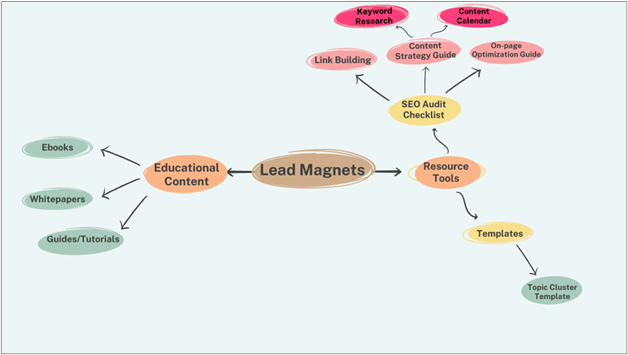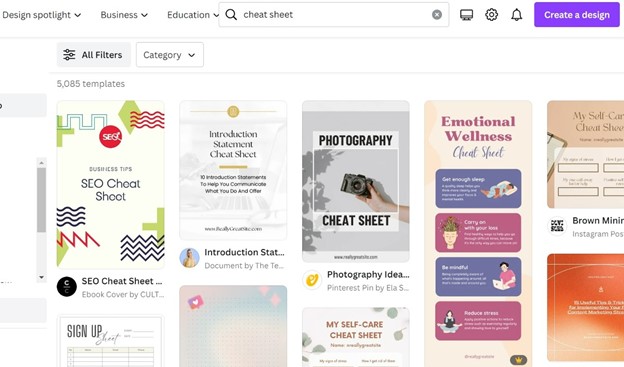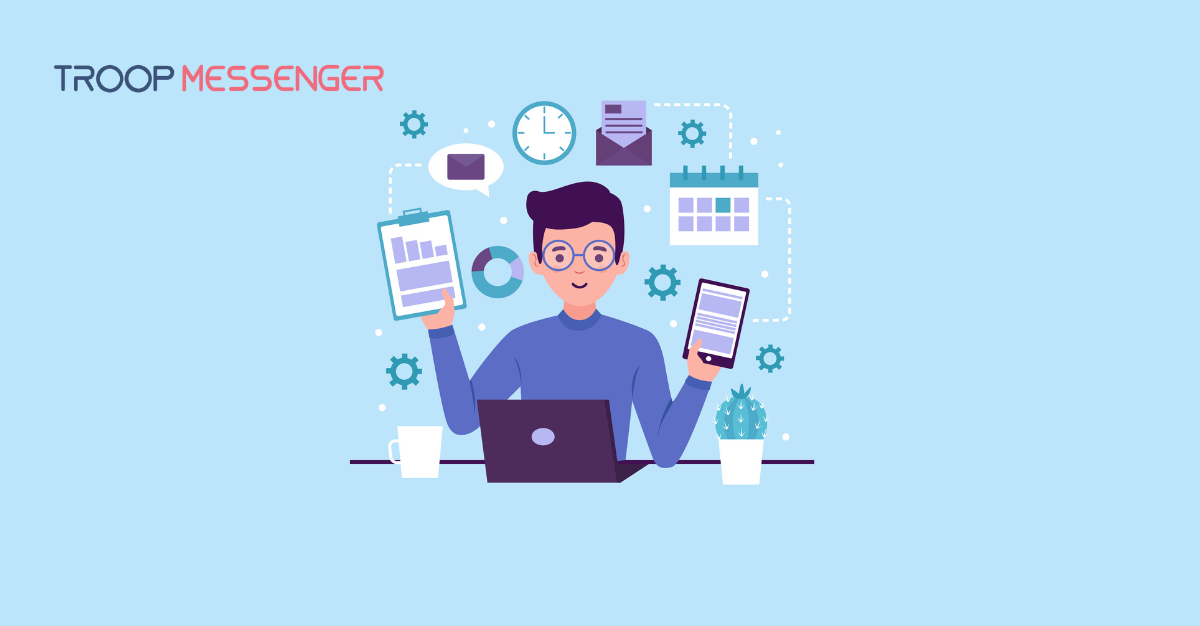Connect with us

How to Create Compelling Lead Magnets to Attract Quality Leads
People won’t give you their email addresses for no reason. If someone approaches you and asks for your contact details just because would you give those to them? I’m sure you won’t.
To get access to quality leads, you must build rapport before asking for their emails. WhatsApp commerce is a useful tool for Rapport building. Lead magnets help with this. But they need to be relevant and compelling enough for your prospects to be willing to get them in exchange for email addresses.
A lot of work goes into designing outstanding lead magnets that attract highly qualified leads. Here are four steps for creating irresistible lead magnets. But first:
What Is a Lead Magnet?
Lead magnets are incentives (usually gated content) given to a prospective customer in exchange for contact information, including their email address. You want that information so you can nurture your relationships with them and, hopefully, drive them down the sales funnel and convert them into customers.
Lead magnet examples are short or long-form resources, such as ebooks, white papers, templates, video content, and more.
However, not all lead magnets will work for your business. The best ones have the following characteristics. They:
- Are relevant
- Provide value
- Are free, but don’t give away too much.
With that in mind, let’s delve into how to create a truly effective lead magnet to support your lead generation efforts.
4 Steps to Creating Compelling Lead Magnets
Here’s how to build valuable lead magnets your visitors will love. I added a bonus tip at the end of the article.
1. Identify Your Target Audience
You should have an audience or customer persona in mind when creating your lead magnet. That way, you get a firm grasp of the lead magnet options–from the content formats to the topics—that could entice your potential customers.
Say you’re an SEO marketing agency targeting software businesses that have just raised funding. While researching your target audience, you may realize they struggle with creating topic clusters, nailing their technical SEO, and creating a content marketing plan.
From this information, you’ll have several lead magnet ideas that your audience will likely find helpful. You could create and provide a free topic clustering template, a technical SEO checklist, or a content marketing whitepaper. We’ll talk more about how you can come up with these options in the next section.
Put simply, developing a compelling lead magnet is impossible if you don’t know what your target audience values. So, start by understanding your audience, their pain points, and their interests.
To determine your target audience and understand their needs, start by researching existing data, leveraging direct customer feedback, and carrying out a competitive marketing analysis.
2. Brainstorm Lead Magnet Ideas
After identifying your target audience, choosing the type of content or asset for your lead magnet is the next logical step. Depending on the lead generation campaign, you may invest time and money into a new lead magnet or repurpose existing content.
Either way, your lead magnet ideas should revolve around assets that can solve your visitor’s challenges and align with your business goals. Afterward, whittle your way down to a specific offer.
Consider the following approaches;
Mind Mapping
Make a visual representation of a major theme or problem, branching out into subtopics or ideas. This technique encourages you to think from multiple angles and stimulates your creativity.

Each branch represents a potential lead magnet idea or a different aspect to consider.
Idea Generation Sessions
Set aside dedicated time for an interactive session where everyone can share their ideas freely based on their understanding of the target market. Invite your sales and customer support teams to these sessions.
Listing and Free Writing
Set a specific time limit (e.g., 10–15 minutes) and write down as many lead magnet ideas as possible without filtering or evaluating them. It's essential to come up with ideas quickly, such as quizzes, infographics, checklists, guides, templates, and ebook lead magnets.
Once you’re done brainstorming, create a solid list of options, and settle on a specific and valuable offer. To do this, streamline your ideas based on their;
- Relevance to your target audience: Will your target audience find the lead magnet valuable and useful?
- Uniqueness: Is your lead magnet unique?
- Virality potential: Is your lead magnet something people that will generate a lot of Tiktok views, Instagram likes, or Facebook comments? Is it something people will want to share with others?
- Ease of creation: Is your lead magnet something you can easily create and distribute?
Using a worksheet, list each lead magnet option and connect it to a common problem(s) your target audience faces, as well as the steps required to achieve the desired outcome.
Leave an asterisk on the idea(s) that aligns with your immediate business goals and create an outline of what it should look like. Once that’s done, it’s time to create your content.
3. Create High-Quality Content
The kind of content you produce depends on where in the marketing funnel your intended audience is. Your content could be a blog post if you decide to incorporate your lead magnet into one, the lead magnet itself, or both.
Circling back to our previous SEO agency example, they’ll need a middle-of-funnel (MOFU) blog to naturally slot in their topic cluster template lead magnet. So, there are two types of content to create for lead generation. The blog post and the topic cluster template lead magnet.
A blog topic like this could work in that situation:
- Hub and Spokes: 5 Tips to Organize Your Topic Clusters (+ Template)
To drive your point home, this article must be just as valuable to readers.
Follow best practices for crafting high-quality blog posts, like using clear, concise, and persuasive language in your content.
Follow the same principles if you decide to use content as your lead magnets. For example, if your lead magnet is a guide, whitepaper, online course, ebook, or checklist, ensure the content packs a lot of value and actionable insights for the users.
Share some key highlights from the content in the landing page or popup showing potential email subscribers what to expect.

Also, make your CTA straightforward and easy to understand. Hence, instead of an ambiguous “join our email list for more updates,” you go for: “click to download our editable topic cluster template.” Check out the excellent example above by Kalungi.
4. Design an Eye-Catching Format
The layout and overall design of your content—whether this be the blog post incorporating your lead magnet, only the lead magnet itself, or both—are just as essential. Remember, the goal is to deliver as much value as possible to the users. A good design helps your users navigate through the content and hence get maximum value from it.
It also boosts engagement because most people will not read it if the structure and layout are complex. That means they’ll leave your blog post without taking a look at your incorporated lead magnet or feeling your lead magnet itself was not worth it. Either way, this is really not the impression you want to leave.
Consider the elements you may need to make the format more engaging. You can start by identifying visual elements, such as graphics, that can make your content more engaging and readable. Visuals help break up huge chunks of text that may put off readers.
Leverage design tools like Canva and Adobe Express to create visually stunning lead magnet content. These tools also have design templates that could give you a good starting point.
For example, Canva has more than 5k cheat sheet templates.

You may also want to break up your content into several sections with a clear table of content. This will be handy in helping users jump to the specific sections they’re interested in.
BONUS TIP: Promote Your Lead Magnet
Getting the word out about your lead magnet is just as important as creating the piece of content itself. You can promote lead magnets through the following channels:
Paid advertising: Create targeted ads on social media, search engines, or other websites.
Blog CTAs: Add a call to action to your blog posts, encouraging people to download your lead magnet. You can also promote it in the sidebar or footer of your blog.
Social media accounts: On platforms like LinkedIn, Twitter, and Instagram, you can post a link to your landing page and encourage people to click through. Though Instagram does not support clickable links in captions, you can put the landing page link on your bio and encourage your Instagram followers to click.
Site pop-ups: Use timed and exit-intent pop-ups to target people when they’re about to leave your website with the lead magnet.
Whichever promotional strategy you choose, don’t forget to verify the addresses you collate with an email finder. You want to make sure your subsequent marketing emails will reach the intended recipients.
Conclusion
When creating lead magnets, keep one thing in mind — you mustn’t always build from scratch. You can repurpose existing content into short-form or long-form lead magnets. This works brilliantly if you already have a piece of content that performs exceptionally well.
If nothing resonates, try brainstorming. The goal is to stimulate creativity and get all your thoughts down in writing. Use best practices to work on your content for lead generation–from the blog posts that accompany your lead magnets to the lead magnets themselves—and avoid cluttered landing page designs to boost conversion rates.
Lastly, make sure to distribute and promote your lead magnet extensively. Best of luck!





.jpg)


